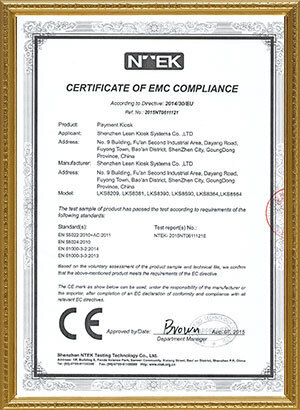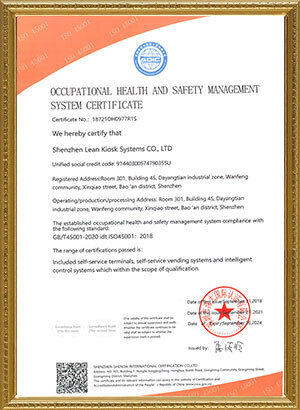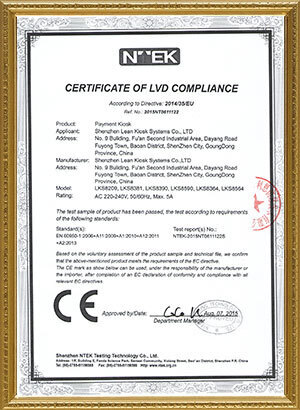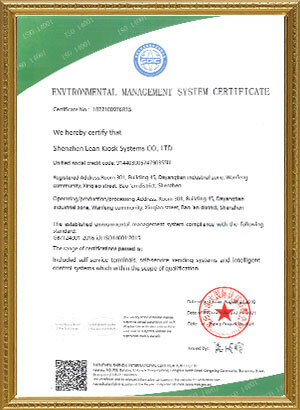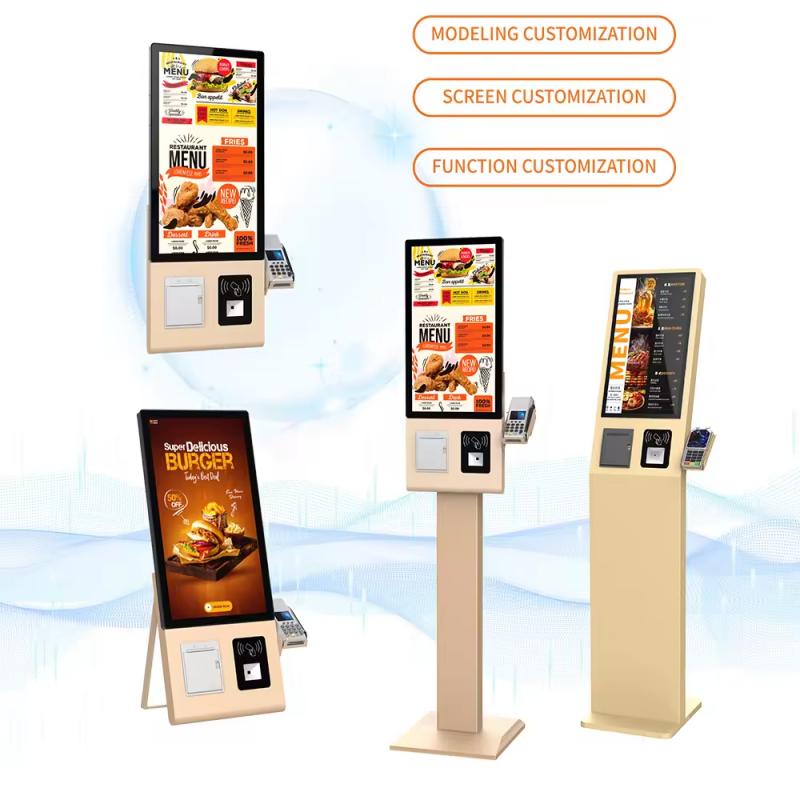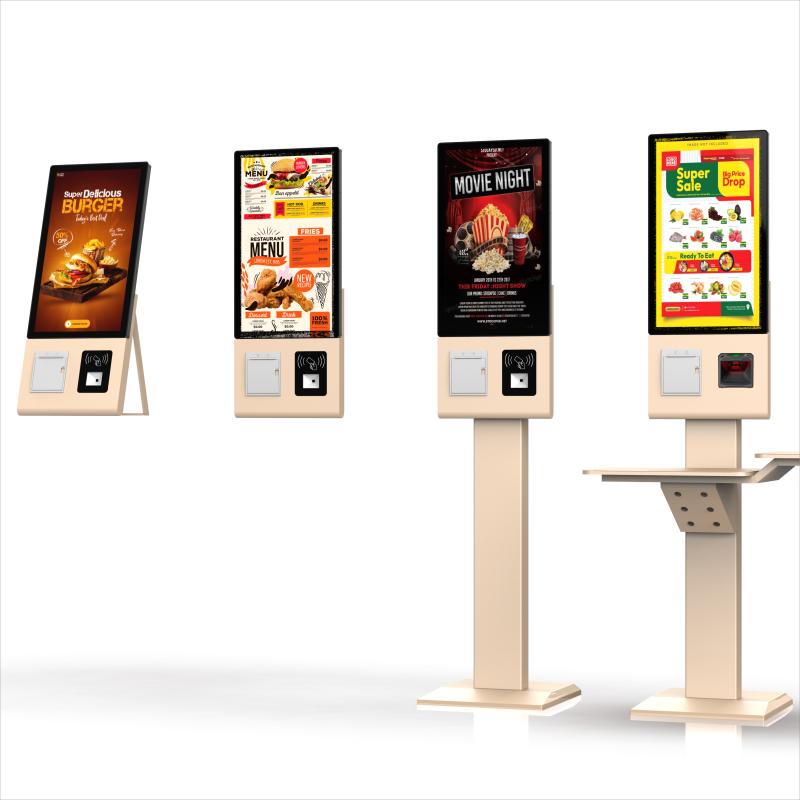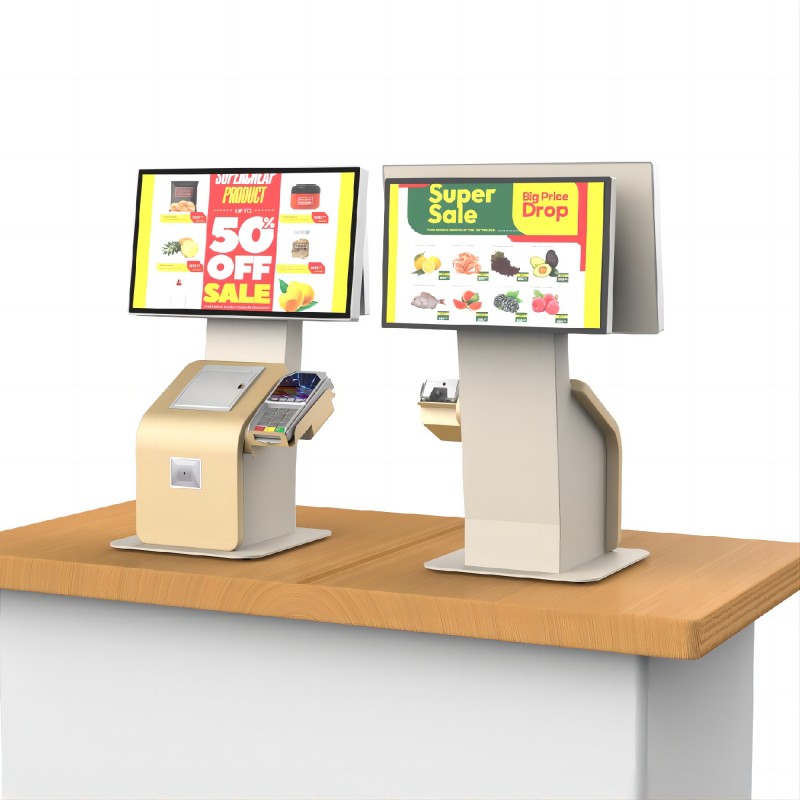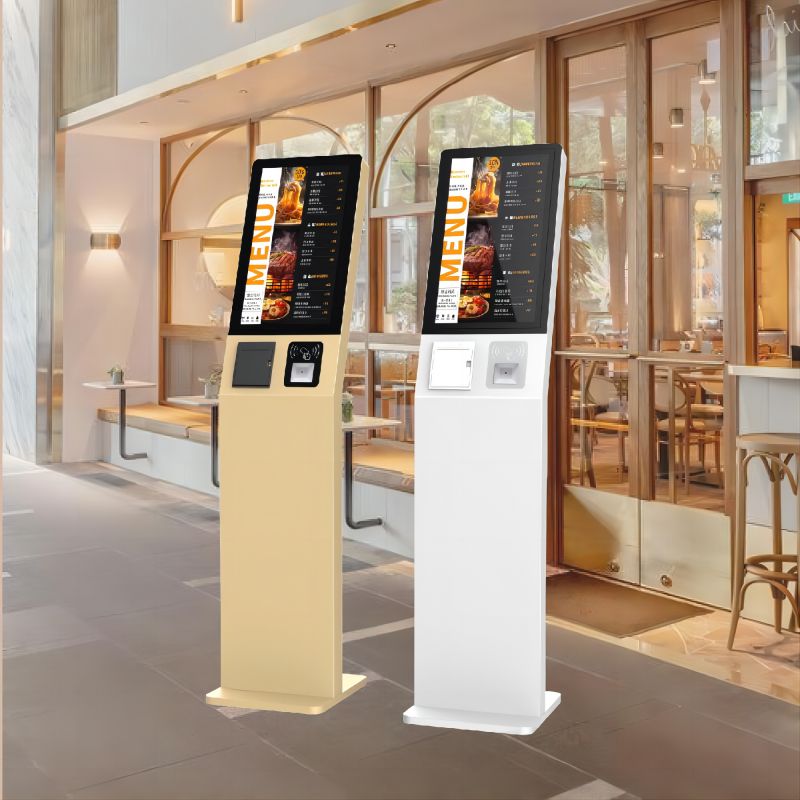The self ordering kiosk market is witnessing significant growth, driven by increasing consumer demand for convenience and efficiency in the food service industry. Currently, the market is estimated to reach nearly 700,000 installations by 2028, with major players like McDonald's leading the way by deploying over 130,000 kiosks globally. This trend is particularly strong in the Asia-Pacific region, where local chains are rapidly adopting these technologies to enhance customer experience and streamline operations.
Future trends indicate that self ordering kiosks will continue to evolve with advancements in technology, including integration with mobile payment systems and artificial intelligence for personalized recommendations. As operational costs rise, many restaurants are accelerating their adoption of kiosks to boost sales and enhance service efficiency.
Overall, the self ordering kiosk market is set for robust growth, driven by technological innovations and the ongoing digital transformation within the restaurant sector. Below, we will provide a detailed introduction to self ordering kiosk from various perspectives.
Self Ordering Kiosk: Definition, History, Inventors, and Composition
Technical Specifications of Self Ordering Kiosk
Pricing and Cost Composition of Self Ordering Kiosk
Benefits of Self Ordering Kiosk
Common Styles and Most Popular Sizes of Self Ordering Kiosk
Wide Applications of Self Ordering Kiosk
Return on Investment for Self Ordering Kiosk: A Detailed Explanation
Customization Options for Self Ordering Kiosk
Market Trends and Innovations in Self Ordering Kiosk
Installation and Maintenance of Self Ordering Kiosk
Advantages and Disadvantages of Self Ordering Kiosk vs. Traditional Ordering
Technology and Innovations in Self Ordering Kiosk
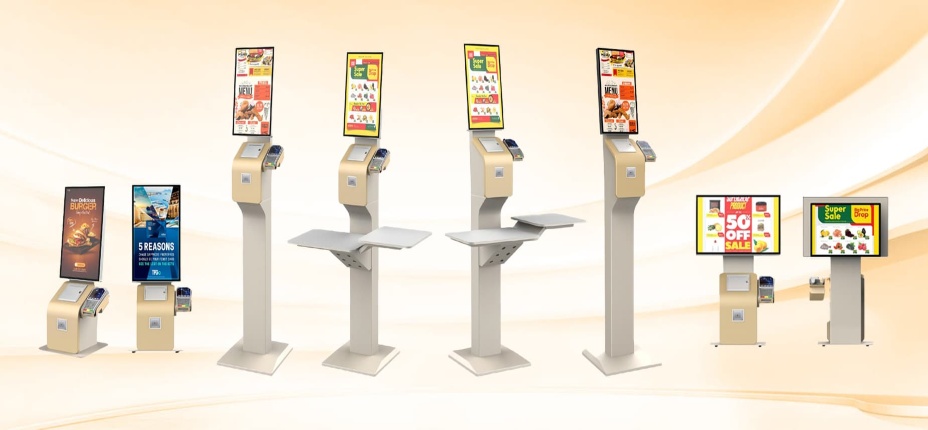
Self Ordering Kiosk: Definition, History, Inventors, and Composition
Self ordering kiosk definition
A self ordering kiosk is an interactive, digital terminal that allows customers to place orders and make payments without direct interaction with restaurant staff. These kiosks are equipped with user-friendly interfaces that enable customers to browse menus, customize their meals, and process payments securely.
History of self ordering kiosk
The concept of self ordering kiosk dates back to the late 1980s and early 1990s, when fast-food chains began experimenting with automated ordering systems. The first implementations were rudimentary and primarily aimed at reducing queue times. Over the years, advancements in touchscreen technology and software have transformed self-ordering kiosks into sophisticated systems used in various sectors, especially in the food service industry.
Who Invent the self ordering kiosk
While there is no single inventor of the self ordering kiosk, many companies have contributed to its development. Notable innovators include Michael G. McDonough, who played a significant role in advancing kiosk technology in the restaurant industry during the 1990s. Various technology firms, such as NCR Corporation and Touchscreen Technologies, have also been instrumental in refining the design and functionality of these kiosks.
Compositions of self ordering kiosk
Self ordering kiosk typically consist of the following components:
Touchscreen Display: A high-resolution interface for customer interaction, providing visual menus and customization options.
Computer System: Internal hardware that processes orders, manages transactions, and connects to the restaurant's POS (Point of Sale) system.
Payment Processing Unit: Secure components that facilitate transactions through credit/debit cards, mobile wallets, and cash.
Printer: A device for printing receipts and order confirmations.
Connectivity Features: Wi-Fi or Ethernet connections for real-time data transmission and inventory management.
Overall, self ordering kiosk has evolved to enhance customer experience, streamline operations, and reduce labor costs for restaurants. They reflect the growing trend of digital transformation in the service industry, providing convenience and efficiency for both customers and businesses.
Video overview of self ordering kiosk
Above is a carefully produced video showcasing the self ordering kiosk, highlighting its structure and step-by-step operational guide. By watching this video, you’ll gain a comprehensive understanding of how the kiosk is built, along with a clear demonstration of its various features and functions. It covers the entire process from order placement to payment, ensuring you have a complete overview of its capabilities. For more details on the self ordering kiosk, we encourage you to watch the video and reach out to us for further information.
Technical Specifications of Self Ordering Kiosk
| Specification | Details |
|---|
| Display Screen | 21.5" - 32" High-definition LCD touchscreen with capacitive or resistive touch technology |
| Resolution | 1920 x 1080 Full HD |
| Touch Technology | Capacitive or Infrared touch technology, multitouch support (10 points) |
| Processor (CPU) | Intel i5 or i7 (depending on performance requirements) |
| Memory (RAM) | 8 GB (expandable to 16 GB) |
| Storage | 128 GB SSD (expandable) |
| Operating System | Windows 10, Linux, or Android (depending on customer preferences) |
| Payment Options | Integrated card reader (NFC, EMV, Chip and Pin), QR code scanner, cash acceptor (optional) |
| Connectivity | Wi-Fi, LAN, Bluetooth, 4G/5G support |
| Printer | Thermal receipt printer (optional) |
| Audio | Built-in stereo speakers, 3.5 mm headphone jack |
| Camera (optional) | 1080p HD camera for facial recognition, video call support |
| Mounting Options | Freestanding or wall-mounted |
| Power Supply | 110V/220V AC input |
| Durability | Scratch-resistant glass, IP54 (water and dust protection) |
| Software Compatibility | POS integration, menu management systems, and third-party app compatibility |
| Dimensions | Varies (Height: 1700mm - 1900mm, Width: 600mm - 800mm, Depth: 400mm - 500mm) |
| Weight | 80 kg - 120 kg |
| Operating Temperature | -10°C to 50°C |
| Certifications | CE, FCC, RoHS |
| Customization | Custom branding, color options, and external design modifications available |
Pricing and Cost Composition of Self Ordering Kiosk
The price of self ordering kiosk typically varies from $3,000 to $10,000 per unit, depending on several factors such as customization, hardware specifications, and additional features. Here is a breakdown of the cost composition:
1. Hardware Costs
Display Screen: The size and type of touchscreen (capacitive or infrared) greatly affect the price. Larger, high-resolution displays (21.5"-32") can add $500 to $1,500 to the total cost.
Processor and Memory: Using a higher-end CPU (e.g., Intel i5/i7) and expanded memory (8GB to 16GB) can increase the cost by $200 to $800.
Payment System: Integrated card readers (EMV, NFC) and cash acceptors can add $300 to $1,200 depending on the complexity and the number of payment options.
Printer: Thermal receipt printers may add $200 to $500 to the cost, especially if receipts are crucial for the business.
Peripheral Devices: Additional components such as cameras for facial recognition, barcode/QR code scanners, or speakers may increase the cost by $150 to $500.
2. Software and Integration
Operating System: Whether it’s Windows, Android, or Linux, the cost of the operating system license could range from $100 to $500 per kiosk.
POS Integration: Seamless integration with existing POS systems may incur a one-time or subscription fee, ranging from $500 to $2,000, depending on the system's complexity.
Custom Software Development: If custom software is required for restaurant-specific functions, this can add $1,000 to $5,000 to the project, depending on the scope.
3. Customization and Branding
External Design: Custom branding, including unique color schemes and logos, can increase costs by $300 to $1,000.
Mounting Options: Wall-mounted kiosks or special stands can vary in price, adding $100 to $500 based on design and material.
4. Installation and Setup
Installation: On-site setup and installation services may cost between $300 and $1,000, depending on the complexity of the installation and the number of kiosks.
Training: Staff training for operating and troubleshooting the kiosks may also add to the cost, generally ranging from $200 to $500.
5. Ongoing Maintenance and Support
Technical Support: Annual maintenance contracts or technical support subscriptions can cost between $200 and $1,000 per year, per kiosk.
Software Updates: Depending on the software provider, updates may be included in the original cost or might incur a subscription fee.
6. Additional Factors
Volume Discounts: Restaurants purchasing multiple units may receive discounts, lowering the per-unit cost.
Shipping and Delivery: Depending on the location, shipping can add $200 to $500 per unit.
The final cost of a self ordering kiosk depends heavily on its components, software, and customization level. Restaurants should carefully assess their specific needs to optimize both upfront costs and long-term ROI.
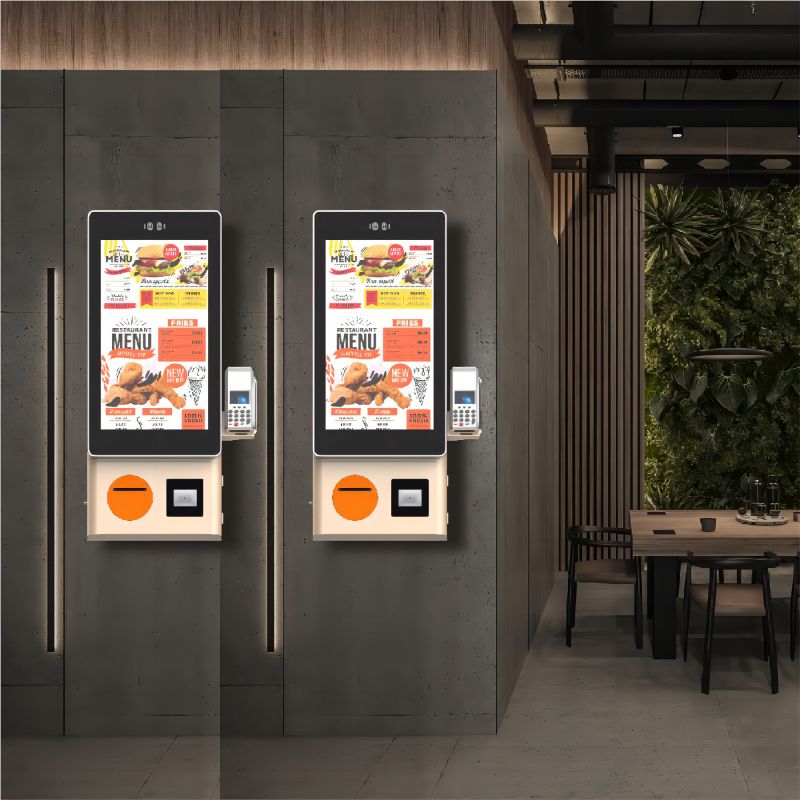
Benefits and advantags of self ordering kiosk
Improved Efficiency: Reduces wait times by allowing customers to place orders directly, streamlining the ordering process and increasing turnover rates.
Higher Accuracy: Minimizes order errors by letting customers input their selections directly, reducing the chance of miscommunication between staff and customers.
Increased Revenue: Encourages upselling with automated prompts for add-ons or combos, leading to higher average order values per customer.
Enhanced Customer Experience: Provides a convenient and user-friendly interface, allowing customers to browse the menu at their own pace without feeling rushed.
Reduced Labor Costs: Automates the ordering process, freeing staff from repetitive tasks like order-taking and allowing them to focus on food preparation and customer service.
Data Collection: Captures valuable customer data, including popular menu items and peak ordering times, which helps restaurants optimize menu offerings and operations.
Scalability: Easily integrates with existing restaurant systems, allowing for seamless expansion as a restaurant grows without a proportional increase in labor costs.
Customization Options: Enables tailored experiences for customers, such as language preferences or dietary filters, enhancing personalization and satisfaction.
Common Styles and Most Popular Sizes of Self Ordering Kiosk
| Style | Description | Popular Sizes (Height x Width x Depth) |
|---|
| Freestanding Kiosk | Independent units that can be placed anywhere in the restaurant with a base. | 60-70 inches x 20-25 inches x 15-20 inches |
| Wall-Mounted Kiosk | Compact units mounted on walls to save floor space, suitable for smaller areas. | 40-50 inches x 15-20 inches x 5-10 inches |
| Countertop Kiosk | Designed to be placed on counters or tables for easy access, typically smaller. | 20-30 inches x 10-15 inches x 5-10 inches |
| Dual-Sided Kiosk | Larger freestanding kiosks with two screens, allowing multiple users at once. | 60-70 inches x 20-25 inches x 20-30 inches |
| Outdoor Kiosk | Weatherproof units for outdoor ordering, durable and protected from elements. | 60-70 inches x 20-25 inches x 15-20 inches (with canopy) |
| Compact Kiosk | Smaller, streamlined kiosks ideal for limited space or mobile applications. | 30-40 inches x 10-15 inches x 5-10 inches |
| Interactive Tabletop | Embedded within tables, offering a unique dining experience for customers. | Integrated within tables, size varies by design. |
| Adjustable Kiosk | Height-adjustable or tiltable screens to accommodate all users, including ADA. | Varies, adjustable heights between 40-70 inches |
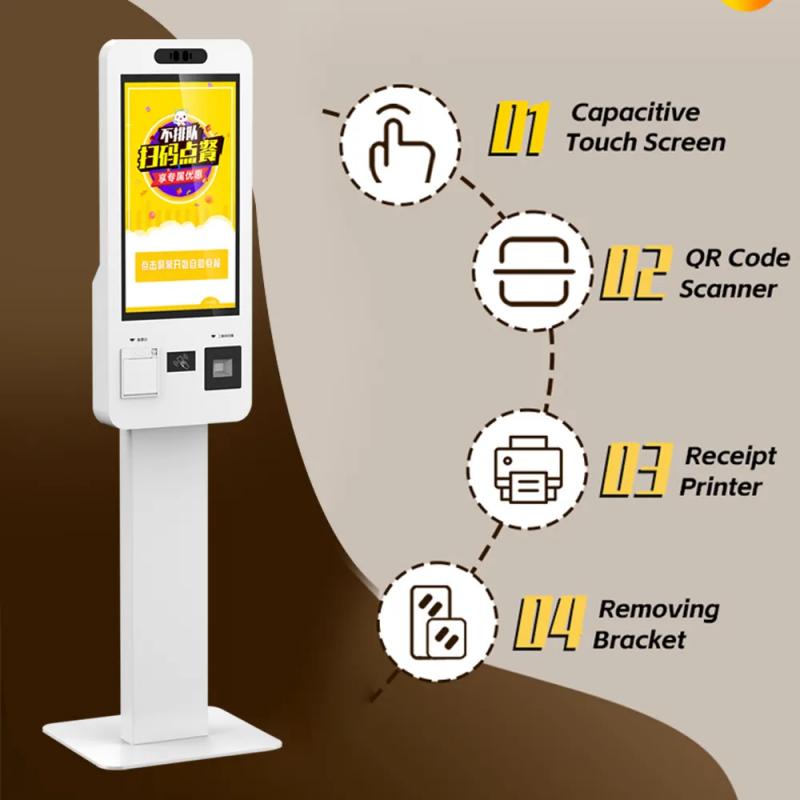
Wide Applications of Self Ordering Kiosk
Self ordering kiosk has diverse applications across various sectors, allowing businesses to improve efficiency, streamline operations, and enhance the customer experience. These kiosks are particularly useful in high-traffic environments where speed and convenience are critical. Below are some of the most common applications:
1. Quick-Service Restaurants (QSRs)
Self ordering kiosks are widely used in fast food chains and quick-service restaurants to reduce wait times and handle high order volumes.
Faster service with real-time order sending.
Customizable options for meal preferences.
Integration with loyalty programs and mobile payments.
2. Cafes and Coffee Shops
Ideal for busy coffee shops where customers want fast ordering and pickup.
Enables customers to order and pay for beverages quickly.
Supports menu customization for specific drink preferences.
Reduces congestion during peak hours.
3. Casual Dining Restaurants
In sit-down restaurants, self ordering kiosks provide customers the convenience of ordering at their own pace.
Order from the table with menu browsing.
Integrates with table-service features to streamline orders to the kitchen.
Upselling through recommendations of drinks or desserts.
4. Cinemas and Entertainment Venues
Self ordering kiosks make purchasing tickets and snacks easier for patrons.
Order snacks and drinks before entering the cinema.
Display upcoming movies and special offers.
Accepts various payment methods, including mobile wallets.
5. Retail Stores
Retailers use kiosks to allow customers to check product availability, place orders, or manage returns.
Product browsing with real-time inventory updates.
Integrated checkout systems for faster service.
Self-service returns and exchange management.
6. Airports and Train Stations
Self ordering kiosks assist travelers in placing food orders or accessing travel services during their commute.
Travelers can quickly order and pay for meals before boarding.
Wayfinding features to navigate terminals.
Supports various currencies and payment types.
7. Shopping Malls
In large shopping complexes, kiosks enhance the customer experience by offering directory and ordering services.
Interactive directories to locate stores or restaurants.
Fast food ordering with multiple restaurant menus displayed on the same kiosk.
Mobile payment and loyalty points integration.
8. Hotels
In hospitality, self ordering kiosks are used to improve room service or hotel restaurant operations.
Guests can place room service orders from kiosks in the lobby or room.
Displays hotel amenities, services, and special promotions.
Offers personalized dining options for hotel guests.
Return on Investment for Self Ordering Kiosk: A Detailed Explanation
The Return on Investment (ROI) for a self ordering kiosk is one of the primary factors driving its adoption in the restaurant industry. It provides measurable benefits in terms of cost savings, increased revenue, and improved operational efficiency.
Increased Order Accuracy: Self ordering kiosks significantly reduce human error by allowing customers to input their orders directly, which translates into fewer mistakes, lower waste, and less need for remakes, ultimately reducing costs.
Higher Average Order Value: Studies show that customers are more likely to order add-ons or upgrade their meals when ordering through kiosks. The upsell prompts displayed on the kiosk screen lead to increased average order value (AOV).
Labor Cost Reduction: Self ordering kiosks reduce the need for front-line staff dedicated to taking orders, allowing restaurant owners to reallocate labor to other areas of operation, such as food preparation or cleaning. This can lead to significant savings in staffing costs over time.
Improved Customer Experience: The convenience of self-service increases customer satisfaction, encouraging repeat business. Shorter wait times and a smoother ordering process attract more customers, further boosting sales and ROI.
Faster Service: With multiple kiosks in place, restaurants can serve more customers simultaneously, particularly during peak hours, thus improving table turnover rates and driving up revenue.
Data Insights and Personalization: Self ordering kiosks can collect valuable customer data, allowing restaurants to better understand consumer preferences and offer targeted promotions, leading to enhanced customer loyalty and increased sales.
The ROI for a self ordering kiosk depends on the size of the restaurant, initial investment, and the efficiency improvements achieved, but many businesses see a payback within 6 to 12 months. Below, we will provide more detailed insights from various perspectives.

Customization Options for Self Ordering Kiosk
Here are 8 detailed customization options for a self ordering kiosk:
Screen Size: Businesses can choose from a range of screen sizes, typically between 15 to 32 inches, depending on the available space and customer interaction requirements.
Branding and Design: Kiosks can be fully customized with a restaurant’s brand colors, logo, and design elements to maintain brand consistency and improve aesthetics.
Software Integration: Custom software solutions can be integrated to match existing POS systems, loyalty programs, or inventory management software, ensuring smooth operations.
Multilingual Support: Kiosks can be programmed to support multiple languages, catering to diverse customer bases and ensuring ease of use for non-native speakers.
Payment Options: Options for customization include integrating various payment methods like credit cards, mobile payments (e.g., Apple Pay, Google Pay), and even cash acceptance modules.
Order Customization Features: Restaurants can offer advanced order customization, allowing customers to modify ingredients, choose portion sizes, and add extras based on their preferences.
Accessibility Features: Kiosks can be equipped with accessibility options such as voice assistance, adjustable screen height, and larger text options to cater to customers with disabilities.
Thermal Printers and Receipt Options: Businesses can customize the kiosk with receipt printers for customer records or opt for digital receipts sent via email or SMS.
Market Trends and Innovations in Self Ordering Kiosk
The market trends and innovations in self ordering kiosks are transforming the restaurant industry, driven by both technological advancements and shifting consumer preferences.
Touchless and Voice-Activated Interfaces: With increasing concern for hygiene and safety, especially after the pandemic, restaurants are adopting touchless technology and voice-activated kiosks. These allow customers to interact without physical contact, offering a safer, more sanitary option.
AI-Powered Recommendations: Artificial intelligence is being integrated into kiosks to offer personalized suggestions based on customer preferences, order history, and real-time sales data. This helps boost upselling opportunities and enhances the overall customer experience.
Mobile and QR Code Integration: Many self-ordering kiosks now support seamless integration with mobile apps and QR codes. Customers can scan a code, place their order on their phone, and complete the transaction via the kiosk, offering more flexibility and reducing wait times.
Enhanced Data Analytics: Kiosks now provide in-depth sales data, enabling restaurants to make data-driven decisions. Real-time data helps track customer preferences, manage inventory more efficiently, and optimize menu offerings.
Customization and Modular Designs: Increasing demand for customization has led to more modular kiosk designs. Restaurants can choose from various components—screens, payment systems, printers, and more—to create a setup that fits their unique needs.
Sustainability Trends: There is growing interest in sustainable kiosk designs, such as using energy-efficient components and reducing paper waste by offering digital receipts. This aligns with environmental goals and appeals to eco-conscious consumers.
Integration with Delivery Services: Kiosks are increasingly being linked to delivery platforms, allowing restaurants to process both in-house and take-out orders from a single system. This increases operational efficiency and enhances customer convenience.
Multi-Language and Accessibility Features: Catering to diverse populations, kiosks now include enhanced accessibility options, including support for multiple languages, voice assistance, and designs that cater to users with disabilities.
These trends highlight the importance of self ordering kiosks in creating a more efficient, personalized, and accessible dining experience. The market is expected to continue evolving with further innovations, positioning kiosks as a vital tool for the future of the restaurant industry.
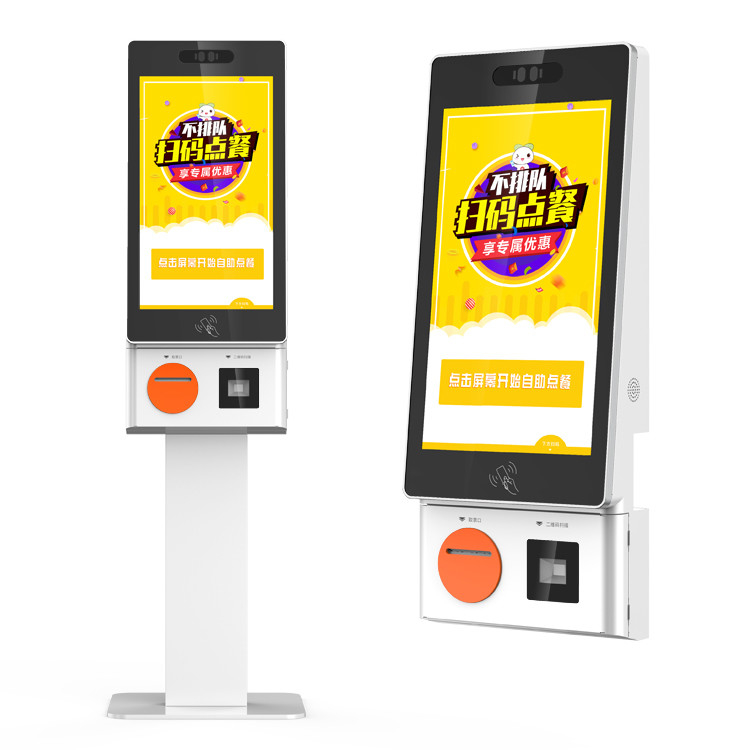
Installation and Maintenance of Self Ordering Kiosk
The installation process of a self-ordering kiosk is straightforward but involves several crucial steps to ensure it operates efficiently and meets restaurant needs.
Site Assessment and Preparation: Before installation, it’s essential to assess the site and determine where the kiosk will be placed. Consider factors such as customer traffic flow, power access, and visibility. A proper site ensures that the kiosk is easily accessible to customers.
Kiosk Setup: Once the location is finalized, the physical setup begins. This involves mounting the kiosk securely, ensuring it is at the right height and angle for users. Many kiosks come with freestanding or wall-mount options, depending on the restaurant layout.
Software Configuration: After the physical setup, the kiosk’s software must be configured to the restaurant’s menu and payment systems. This step includes integrating with the POS system, uploading menu items, prices, and setting up the ordering interface to ensure it’s user-friendly.
Network and Power Connection: Ensuring a stable power supply and network connection is crucial for smooth operation. The kiosk will require consistent internet connectivity for real-time order processing, inventory updates, and payment transactions.
Testing: After installation, it’s important to run a series of tests. This includes checking the kiosk’s interface for proper menu functionality, ensuring payments are processed accurately, and confirming that orders are being transmitted to the kitchen correctly.
Training Staff: Once installed, restaurant staff need to be trained on how to use the kiosk, troubleshoot minor issues, and assist customers if needed. This also includes understanding how to maintain the kiosk’s hardware and software.
Maintenance:
Regular Software Updates: To ensure smooth operation and security, regular software updates are necessary. These updates often include new features, security patches, and improved performance capabilities.
Cleaning and Physical Maintenance: Kiosks require regular cleaning, especially the touchscreens, to ensure hygiene and a good user experience. It’s important to use appropriate cleaning materials to avoid damaging the screen.
Technical Support and Remote Monitoring: Many kiosks offer remote monitoring, allowing technical support teams to detect and resolve issues such as software bugs or connectivity problems. It’s essential to have ongoing support from the kiosk provider to address any technical concerns quickly.
Hardware Inspections: Periodic hardware inspections are crucial for identifying wear and tear. This includes checking the touchscreen, card readers, receipt printers, and other components to ensure they are functioning properly.
By following these steps, restaurants can ensure their self-ordering kiosks operate efficiently and provide a seamless experience for customers, while minimizing downtime and maintenance costs.

Advantages and Disadvantages of Self Ordering Kiosk vs. Traditional Ordering
Self ordering kiosk has transformed the restaurant industry, offering both benefits and some drawbacks when compared to traditional ordering methods. Here's a detailed comparison:
Advantages of Self-Ordering Kiosk:
Increased Efficiency: Self-ordering kiosks speed up the ordering process by allowing customers to browse menus and place orders at their own pace. This reduces wait times during peak hours and enhances overall restaurant throughput.
Order Accuracy: Kiosks minimize human error, as customers input their selections directly, ensuring the order matches their preferences without miscommunication between staff and customers.
Upselling Opportunities: Kiosks can be programmed to suggest complementary items or promotions during the ordering process, leading to increased average order values.
Labor Cost Savings: By automating the ordering process, kiosks reduce the need for front-of-house staff, helping restaurants lower labor costs while maintaining a high level of service.
Customer Satisfaction: Many customers prefer the control and privacy offered by kiosks, as they can customize orders without feeling rushed or judged, leading to improved satisfaction.
Data Collection: Self-ordering kiosks provide valuable data on customer preferences and purchasing habits, allowing restaurants to optimize their menu offerings and marketing strategies.
Multilingual Support: Kiosks can cater to diverse customer bases by offering multiple language options, making the ordering process more accessible to non-native speakers.
Reduced Human Contact: Especially post-pandemic, kiosks offer a contactless way to order, which can be important for health-conscious customers or those concerned with hygiene.
Disadvantages of Self-Ordering Kiosks:
Initial Investment Costs: Installing self-ordering kiosks requires a significant upfront investment in hardware, software, and maintenance, which can be a barrier for smaller businesses.
Technical Issues: Kiosks rely on technology, and any system downtime or technical issues can disrupt service, leading to frustration for both customers and staff.
Limited Human Interaction: Some customers, particularly older generations or those who prefer personal service, may find kiosks impersonal and may miss the opportunity to ask questions or receive recommendations from staff.
Maintenance and Upkeep: Kiosks require regular maintenance and software updates to ensure smooth operation. Malfunctions or lack of updates can lead to customer dissatisfaction and potential revenue loss.
Adaptability: Not all customers are comfortable using technology, and it may take time for certain segments of the population to adapt to self-ordering kiosks, potentially alienating these customers.
Customization Limitations: While kiosks offer customization options, they may not be as flexible as a human server in accommodating special requests or modifications to complex orders.
In conclusion, while self-ordering kiosks provide numerous operational and financial benefits, they come with certain challenges that must be addressed. Restaurants should weigh these pros and cons carefully to determine if kiosks are the right fit for their business model.
Technology and Innovations in Self Ordering Kiosk
Self ordering technology is transforming the restaurant industry by offering customers a more streamlined and personalized experience. Touchscreen advancements provide an intuitive interface, enhancing the order process with highly responsive and durable screens. AI and machine learning algorithms allow for tailored suggestions based on customer behavior, which not only increases upselling but also helps restaurants analyze consumer preferences. Innovations such as facial recognition, biometrics, and voice assistance further enhance convenience, making the process faster and more personalized. Integrations with mobile payment systems and real-time data analytics optimize restaurant operations, making the technology adaptable and scalable to different business models. These ongoing innovations promise to redefine dining experiences by improving operational efficiency and customer satisfaction. Here are some key trends and innovations in self ordering kiosk:
Touchscreen Evolution: Modern kiosks now feature highly responsive, intuitive touchscreens that support multi-touch gestures, enhancing user experience. With options like anti-glare and durable screens, they are built for long-term use in busy environments.
AI and Machine Learning: AI-driven self-ordering kiosks use customer data to personalize the user experience. Based on purchasing history, these kiosks can suggest menu items or promotions, improving upselling opportunities. AI also helps analyze customer preferences and predict demand patterns.
Mobile Integration: The integration of mobile payments (like Apple Pay and Google Wallet) with self-ordering kiosks provides a seamless, cashless experience for customers. Some systems are also integrated with apps, allowing users to place orders on their phones and then confirm at the kiosk.
Facial Recognition and Biometrics: Some kiosks now feature facial recognition technology, which speeds up the ordering process by identifying repeat customers and recalling their past orders. This offers a highly personalized and efficient experience.
Voice Assistance: Voice-activated self-ordering kiosks enable users to place orders using natural language commands, making the experience accessible for customers who may have difficulty with touchscreen technology or simply prefer voice commands.
Augmented Reality (AR) Menus: Innovative kiosks are incorporating AR, allowing customers to visualize meals in 3D before placing an order. This feature enhances the decision-making process by providing a more immersive experience.
Real-time Data Analytics: Kiosks now come with advanced data analytics software, allowing restaurant owners to track ordering trends, peak times, and customer preferences in real-time. This data can be used to optimize inventory, menu design, and staffing.
Modular and Customizable Designs: Self-ordering kiosks are increasingly customizable, with modular designs that allow restaurants to tailor the technology to their specific needs. This flexibility accommodates a variety of restaurant formats, from fast-casual to fine dining.
As technology continues to evolve, self-ordering kiosks will become even more efficient, intuitive, and customer-friendly. The integration of AI, voice, AR, and data analytics promises to reshape the way customers interact with restaurants.
Summary
Self ordering kiosk has rapidly gained popularity in the restaurant industry due to their ability to enhance operational efficiency and improve the customer experience. These kiosks allow customers to browse menus, customize orders, and pay quickly, which reduces wait times and optimizes order accuracy. They provide various payment methods, support multiple languages, and integrate with restaurant systems, allowing seamless order management. Their customization options range from the interface design to hardware configurations like touchscreens and printers. As customer preferences shift towards convenience, these kiosks have become a strategic investment, contributing to better customer satisfaction, increased order value, and streamlined operations. Overall, self ordering kiosks offer a scalable solution for restaurants to meet growing consumer demand for faster and more efficient service.










